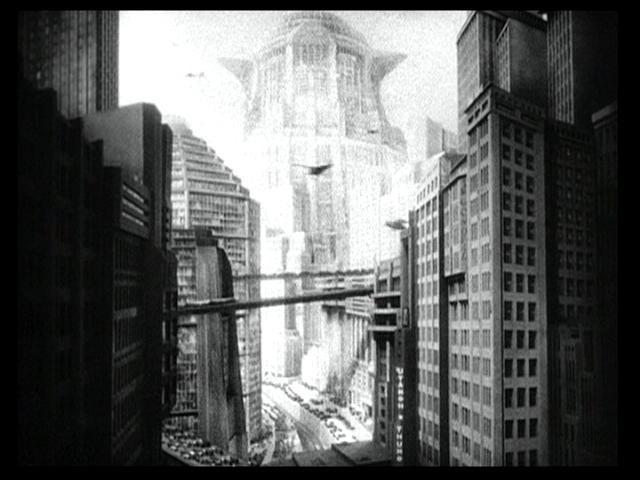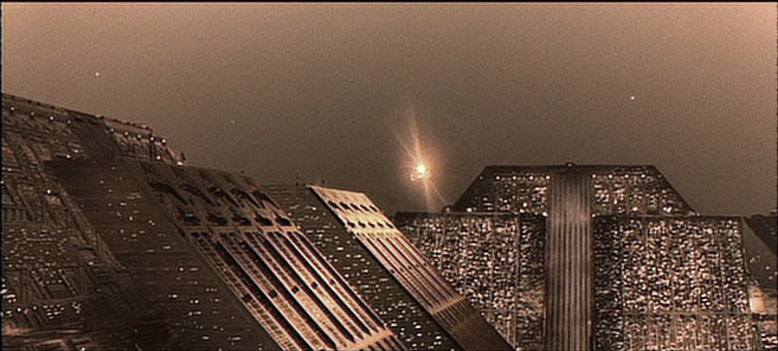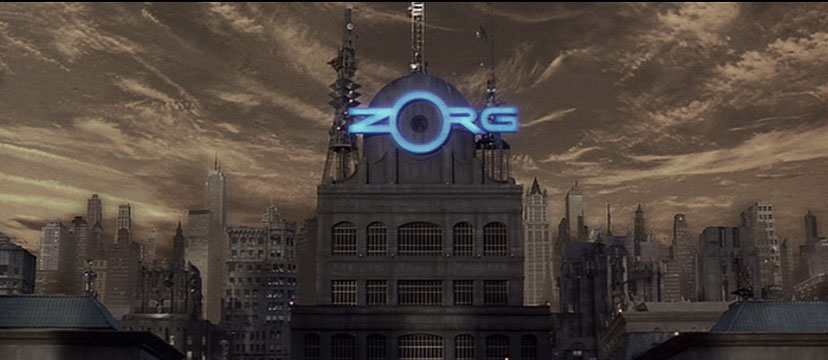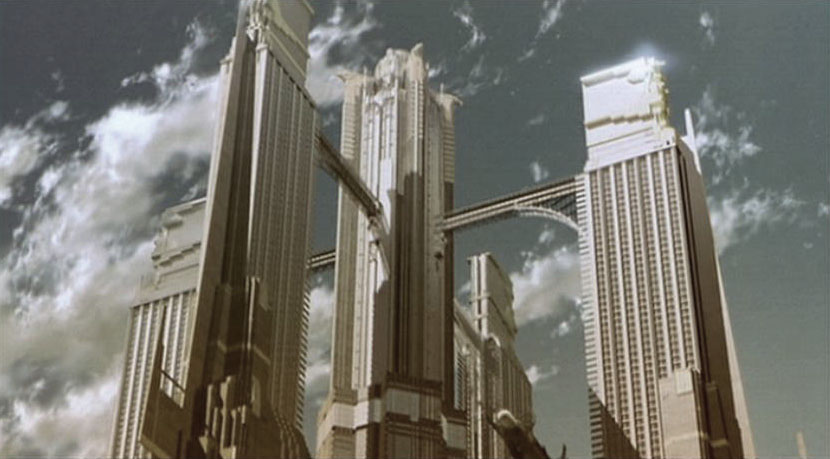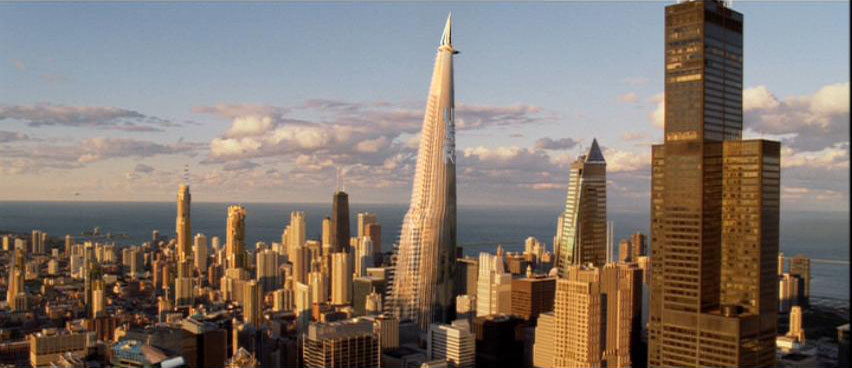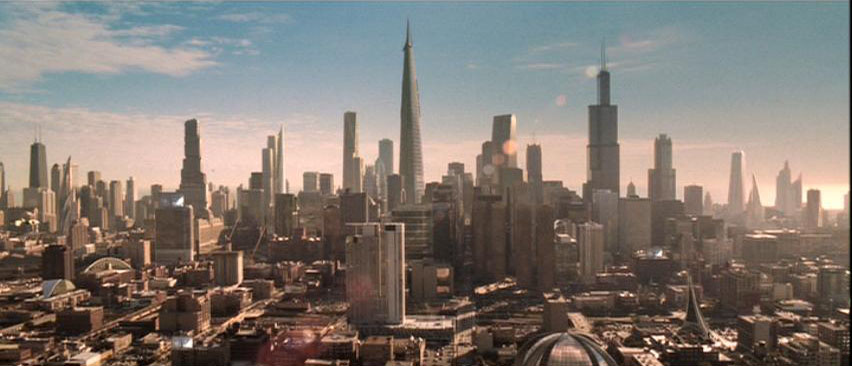
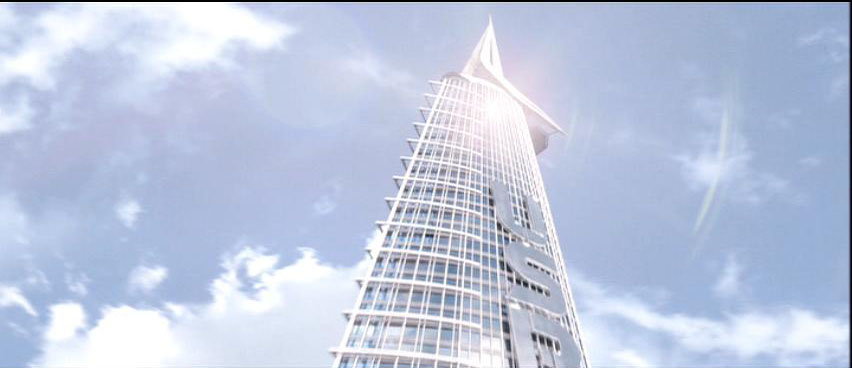
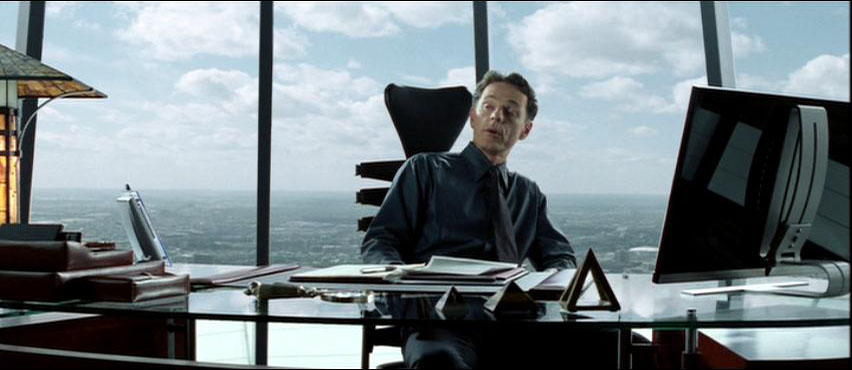
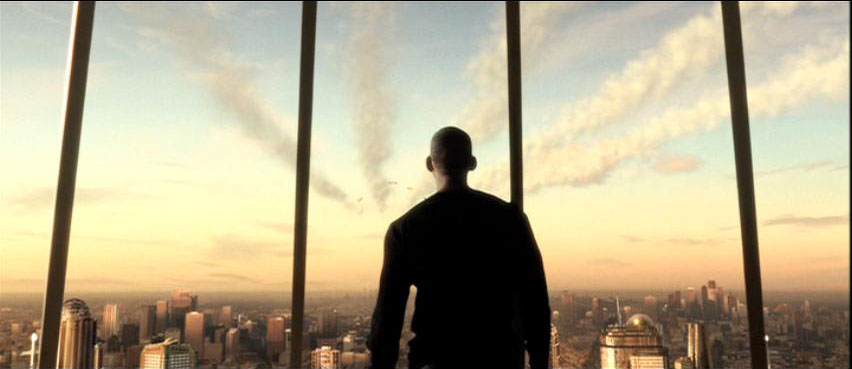
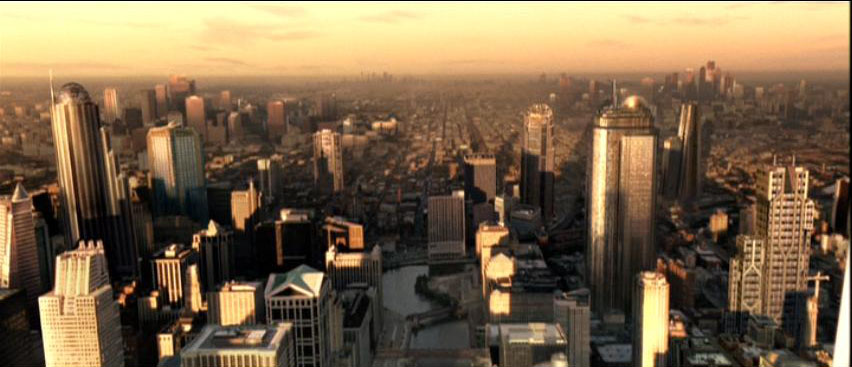
The last film to be addressed is Alex Proyas's I Robot released in 2004; this film is of particular interest because despite having a centrally located skyscraper, the futurist vision of Chicago does not have the same urban density that the other movies all have in common. Nor is the film dark and dystoic but rather the sun penetrates into all the urban spaces creating a bright and hopeful urban environment. The central tower, in I Robot is owned by the USR - a corporation, but unlike the other corporations USR seems intent on helping others, and the architecture of the film indicates that. This is the only movie that has the central tower is accessible to the public and built on a human scale; the front of the tower has a significant courtyard from which anyone can access the front lobby. The ultra modern expanses of glass suggest a transparency; this company has nothing to hide, the use of glass gives them a sense of trustworthiness and accountability. For the most part the public appearance USR tries to create is true, the people themselves are honest and believe the work that they are doing will benefit the rest of humanity. I Robot demonstrates that it is possible with responsible urban planning for skyscrapers to have their place in society as monumental symbols, so long as they express the feeling and needs of the collective and not a select few.
Film has the ability to bring architectural discourse to life while reaching a greater audience. Set design does more then provide a space for action to take place, it provides an opportunity to question the implications that a built environment may have without the boundaries of reason, nothing is off bounds in film, if it can be imagined it can be achieved as seen in the five films that were discussed. Film is by no means a substitute for architecture; rather it is a medium for exploration, one that can capture audience's imaginations.
The last film to be addressed is Alex Proyas's I Robot released in 2004; this film is of particular interest because despite having a centrally located skyscraper, the futurist vision of Chicago does not have the same urban density that the other movies all have in common. Nor is the film dark and dystoic but rather the sun penetrates into all the urban spaces creating a bright and hopeful urban environment. The central tower, in I Robot is owned by the USR - a corporation, but unlike the other corporations USR seems intent on helping others, and the architecture of the film indicates that. This is the only movie that has the central tower is accessible to the public and built on a human scale; the front of the tower has a significant courtyard from which anyone can access the front lobby. The ultra modern expanses of glass suggest a transparency; this company has nothing to hide, the use of glass gives them a sense of trustworthiness and accountability. For the most part the public appearance USR tries to create is true, the people themselves are honest and believe the work that they are doing will benefit the rest of humanity. I Robot demonstrates that it is possible with responsible urban planning for skyscrapers to have their place in society as monumental symbols, so long as they express the feeling and needs of the collective and not a select few.
Film has the ability to bring architectural discourse to life while reaching a greater audience. Set design does more then provide a space for action to take place, it provides an opportunity to question the implications that a built environment may have without the boundaries of reason, nothing is off bounds in film, if it can be imagined it can be achieved as seen in the five films that were discussed. Film is by no means a substitute for architecture; rather it is a medium for exploration, one that can capture audience's imaginations.
